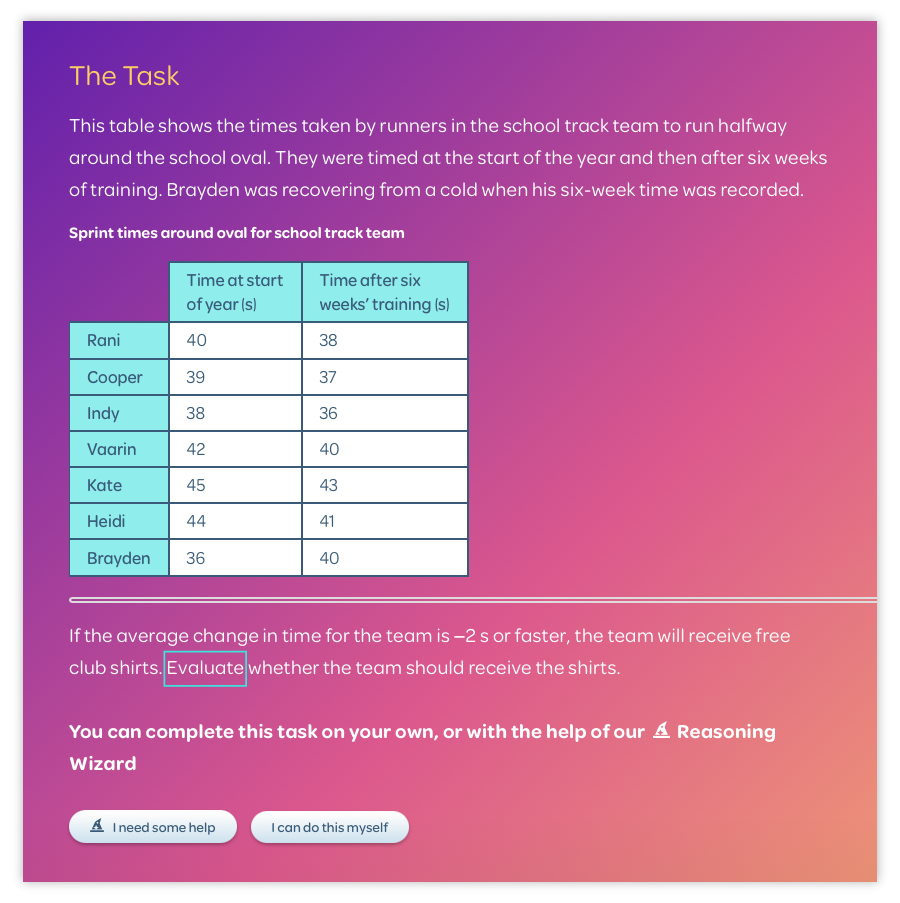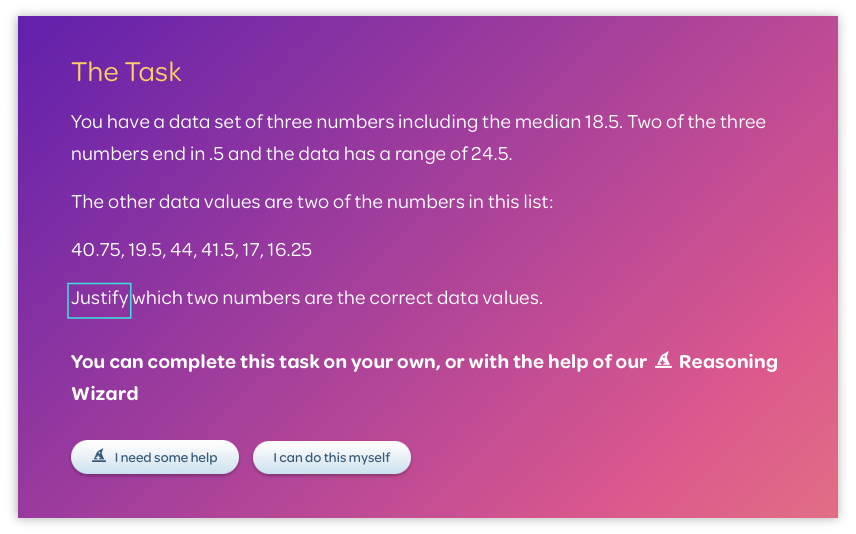Articles & Videos
How cognitive verbs play a part in reasoning
Categories
Subscribe to our newsletters
Receive teaching resources and tips, exclusive special offers, useful product information and more!
How cognitive verbs play a part in reasoning
BitMaths 18/10/23

Reasoning tasks are distinctly different from problem-solving tasks because they focus on the how and the why of the solution, rather than the answer itself.
A reasoning task requires students to not only solve the problem, but also articulate their mathematical reasoning using specific cognitive verbs.
To do this successfully, students need to both recall the meaning of the cognitive verb and explain how the verb applies in a specific context.
Let’s look at some of the cognitive verbs students will use in BitMaths to consolidate and develop their reasoning skills, and the wording their answers should include.
Prove
To use a sequence of steps to find a conclusive result. Answers should include ‘is/is not’ or ‘does/does not’ statements.
Justify
To show all evidence that supports a conclusion in a logical way. Answers should include ‘because’ statements.
Determine
To come to a conclusion after considering and/or investigating given information. Answers should include ‘is’ statements and provide justification.
Explain
To make a process clear by giving a detailed account of the given information and/or investigation. Answers should be written in sentences or a paragraph.
Decide
To consider options or given information and reach a conclusion. Answers should state the decision clearly and provide justification.
Evaluate
To appraise a situation or list of options by considering strengths, limitations and implications, and make judgements based on specific criteria. Answers should be written in sentences and can include calculations, tables, graphs or lists to support findings.
Compare
To identify and consider the strengths and limitations of options. Answer statements can include a list.
Reasoning task examples from BitMaths
Because cognitive verbs are so valuable to the reasoning process, you’ll find one in every BitMaths reasoning task to prompt students to correctly articulate their mathematical reasoning and apply higher-order thinking skills.
Here is a selection of reasoning tasks so you can see how some of the cognitive verbs are used in BitMaths.
Example 1
Module MG801 Units of Area and Volume
Uses the cognitive verb: Determine

Example 2
Module SP807 The Effect of Individual Data Values
Uses the cognitive verb: Evaluate

Example 3
Module SP706 Interpreting Data Displays
Uses the cognitive verb: Justify

Reasoning tasks are just one of the amazing features in BitMaths. There’s so much to discover with BitMaths. Request a free trial today!